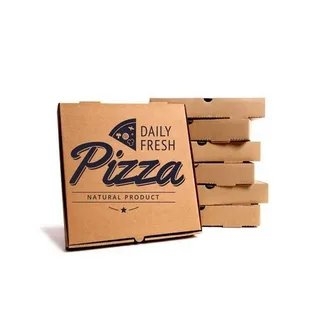The question of whether pizza boxes are recyclable or compostable often leads to confusion. Many people toss them into recycling bins without a second thought. However, not all materials used in these boxes are suitable for recycling or composting. Understanding the full picture helps reduce waste and protect the environment effectively.
Understanding the Materials Used in Pizza Packaging
The composition of these boxes is the first thing to consider when thinking about sustainability. Most are made from corrugated cardboard, which is a recyclable material. Cardboard is strong, lightweight, and widely used because it can hold the heat and weight of a pizza effectively. However, what makes the issue complex is not the cardboard itself but what happens to it after the pizza sits inside.
When the box absorbs oils, cheese, or sauces, its fibers become contaminated. The recycling process relies on clean paper fibers that can be turned into pulp. Grease-soaked or food-stained cardboard cannot be processed properly. The oil prevents the fibers from separating during recycling, leading to a poor-quality pulp.
To handle this issue, some recycling centers have specific rules. They allow only the clean parts of the box to go into recycling, while the greasy parts must be thrown away or composted. The lid, which usually remains clean, can often be recycled, while the bottom may need to be discarded.
Advancements in technology are helping improve recycling systems. Some facilities are now able to handle slightly soiled cardboard through specialized filtering systems. However, these centers are still limited in number and location. The key takeaway is that the material itself is recyclable, but contamination is the main obstacle.
The Impact of Food Residue on Recycling
Food residue is the number one enemy of recycling success. Even small traces of cheese, oil, or sauce can cause large problems during processing. When such pizza boxes enter a recycling plant, they can ruin entire batches of clean cardboard. This contamination forces recyclers to discard the affected materials, which increases waste instead of reducing it.
Oil and grease cling to cardboard fibers tightly. Once absorbed, it cannot be washed out easily. In the recycling process, the fibers must be separated in water to form a new pulp. Contaminated fibers cause the pulp to clump together, making it impossible to form new paper sheets of acceptable quality.
To make recycling more effective, individuals must separate clean and dirty parts of the box before disposal. Some communities provide clear guidelines on what to do. For example, they might instruct residents to rip off clean lids for recycling and place greasy sections in compost bins if local facilities accept them.
This issue shows how consumer education plays a vital role in successful recycling. Many people assume that cardboard is always recyclable, but the presence of food residue changes everything. By being aware of what can and cannot go into recycling bins, households can make a big difference in reducing waste and contamination.
Composting as an Alternative
Composting offers a promising alternative when recycling is not an option. In composting, organic materials break down into nutrient-rich soil through natural decomposition. Clean cardboard and small amounts of greasy paper can be composted safely under the right conditions.
Composting works best when the box is torn into small pieces. This increases the surface area for microbes to act on, helping the material break down faster. The cardboard provides carbon, an essential element for a balanced compost mix. When combined with nitrogen-rich items like fruit peels or vegetable scraps, it forms high-quality compost.
However, one must ensure that no plastic coatings or stickers remain on the box before adding it to compost. Many pizza containers have small labels or glossy parts that contain plastic. These materials do not decompose and can pollute the soil.
Composting at home is simple for those with space. Outdoor compost bins or piles work well for breaking down cardboard over time. Community composting programs also accept such materials, provided they are free of synthetic coatings. This method not only reduces landfill waste but also supports natural soil enrichment, helping the environment thrive.
Environmental Effects of Improper Disposal
When boxes contaminated with food end up in landfills, they create multiple problems. Organic residues like cheese and oil break down slowly without oxygen. This process releases methane, a greenhouse gas far more harmful than carbon dioxide. Over time, methane contributes to global warming and worsens climate change.
Landfills are already crowded with materials that could be recycled or composted. When contaminated cardboard is thrown away, it adds to the growing waste problem. Moreover, the resources used to make new boxes—trees, water, and energy—go to waste when recycling cannot occur.
Another concern is the chemicals used in printing and dyeing the packaging. Some inks contain substances that may leach into soil and groundwater when the material decomposes improperly. Responsible disposal helps reduce these risks significantly.
Improper handling of recyclable materials reflects poor waste management practices. Educating consumers about sorting and disposal methods can prevent such environmental harm. Every small action, like cleaning food scraps before recycling, contributes to a healthier planet.
Industry Efforts Toward Better Recycling Solutions
The packaging industry is taking active steps to make cardboard recycling easier and more efficient. Many manufacturers are now using water-based inks and biodegradable coatings. These innovations help ensure that cardboard can be recycled or composted safely without chemical residue.
Some pizza chains are experimenting with box designs that separate the greasy section from the clean one. This design allows customers to recycle part of the box easily. In addition, several recycling companies are developing advanced sorting systems that detect and remove contaminated materials automatically.
Government agencies and environmental organizations are also working on awareness campaigns. They teach people how to dispose of packaging responsibly. Better labeling on boxes, such as clear recycling instructions, helps customers make informed choices.
Research continues to explore new materials that can replace traditional cardboard. Biodegradable packaging made from plant fibers, bamboo, or agricultural waste is gaining attention. Such innovations could make the pizza industry more sustainable in the long run.
Tips for Responsible Disposal
To manage waste efficiently, consumers can follow a few simple steps at home:
- Check for contamination: Before recycling, inspect the box. If it has grease or melted cheese, remove that section.
- Separate parts: Recycle the clean lid or sides, and compost the dirty base if possible.
- Follow local rules: Waste management guidelines vary by area. Always check what your local recycling center accepts.
- Avoid plastic liners: Some packaging includes a thin plastic sheet. Remove it before recycling or composting.
- Educate others: Share these habits with friends and family to promote better waste handling.
Following these steps reduces contamination and supports recycling systems effectively. Every household effort adds up to create meaningful environmental impact.
The Role of Municipal Waste Programs
Municipal recycling programs differ from city to city. Some accept slightly soiled cardboard, while others reject it completely. Understanding local waste policies is essential for proper disposal. In some regions, facilities use advanced machines that can filter out food particles. In others, manual sorting is still the standard practice.
Cities with strong recycling programs invest heavily in community education. They run workshops and distribute guides explaining how to separate household waste correctly. Some even offer free composting bins to encourage sustainable habits.
However, rural or underdeveloped areas often lack such facilities. In those cases, people must rely on composting or simple disposal methods. Governments and private companies are working together to improve accessibility by introducing mobile collection services and community drop-off points.
When people follow municipal guidelines carefully, recycling becomes more efficient. It also reduces the strain on landfills and lowers greenhouse gas emissions. Proper waste management requires collective effort, with citizens, local authorities, and industries working hand in hand.
Future of Sustainable Packaging
The future of food packaging looks promising with constant innovation. Companies are moving toward circular economy models, where materials are reused and recycled continuously. Packaging made from plant-based fibers or mushroom mycelium is gaining popularity. These materials decompose naturally and leave no toxic residue.
Scientists are developing coatings that resist oil without using harmful chemicals. Such coatings will allow packaging to remain recyclable even after contact with greasy food. Some startups are also working on reusable containers for takeaway food, reducing the need for single-use packaging altogether.
Public demand plays a vital role in shaping these trends. When consumers prefer eco-friendly options, businesses have a reason to adopt sustainable practices. Support for recyclable and compostable materials is growing rapidly worldwide.
Ultimately, the combination of innovation, awareness, and regulation will determine the future of sustainable packaging. As technology advances, we may soon reach a point where even contaminated cardboard can be processed efficiently, closing the recycling loop completely.
Conclusion
The question of whether pizza packaging is recyclable or compostable does not have a simple yes or no answer. The truth lies in how the material is handled after use. The cardboard is recyclable, but food contamination limits that possibility. Composting offers a great alternative when recycling is not possible. With better awareness, improved recycling systems, and responsible consumer behavior, we can reduce waste and move toward a cleaner, more sustainable world.







